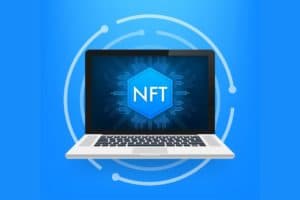The attention and fascination generated by the NFT world was bound to attract interest even in the legal sphere where diverse profiles pose just as many questions, similar to what has already happened with other technological phenomena.
Legal profiles of NFTs
The disruptive diffusion of non-fungible tokens in important and ample sectors such as that of art, fashion, sport and music, has turned the spotlight on various legal aspects which inevitably end up being implicated.
In particular, the debate focuses on the very placement of NFTs within existing categories and, therefore, already regulated by a specific discipline.
Alongside this main issue, there is discussion of the legal profiles relating to the regulation of intellectual property, anti-money laundering legislation, consumer legislation or, again, tax profiles.
If we consider, net of the specific technical configurations they may assume, the main distinguishing characteristics of NFTs – namely uniqueness (the token is or represents a unique object, digital or otherwise, which can be unequivocally associated with a subject or a wallet) indivisibility (NFTs are not divisible) and non-fungibility (non-interchangeability, substitutability or replicability) – these can be traced to the category of asset tokens which uniquely represent a tangible or intangible asset and their possession confers the right to claim such asset or to use it exclusively. In addition, the transfer of the token may entail the transfer of the corresponding right to the asset.
On the other hand, with reference to the civil law definition of non-fungibility, an asset is considered fungible when it can be identified as being of one kind and can be exchanged for another asset of the same kind (e.g. money). Conversely, it is considered to be non-fungible when such substitution cannot take place because the exchange would not satisfy the creditor’s interest.
NFTs could be considered in the abstract as “securities representing goods” since they represent the (mediated) possession of the goods, they assure the holder of the delivery of the goods and the holder can dispose of them even if only by transferring the security.
Potential applicable regulatory profiles
The framing and the legal discipline applicable to the NFT case are not theoretical questions or of simple comparison between legal interpreters. The correct identification of the applicable discipline, already in the design phase, in fact determines the subsequent legal compliance and possibility of lawful circulation.
Although no firm positions have yet emerged on the legal framework applicable to the NFT category, in spite of the extensive debate also at the European and international legislative level, potential applicable regulatory profiles can be envisaged.
In the framework of the European Union, the question has been raised as to the applicability of the MiCAR and MiFID II regulations to the case of non-fungible tokens.
MiCAR regulations
The MiCAR proposal, which has the objective of orderly development of the markets of crypto-assets and tokens issued on DLT, generically defines “crypto-asset” as the digital representation of value or rights that can be transferred and stored electronically, using distributed ledger technology or similar technology, then distinguishing sub-categories of the same (utility tokens, asset-referenced tokens or ‘ART’, e-money tokens or ‘EMT’), providing uniform rules directly applicable to issuers and service providers, and preparing a differentiated regime for the offer of crypto-assets.
If in the writer’s opinion, it is possible to exclude with a certain degree of certainty that NFTs can be traced back to asset-referenced tokens (which in common jargon are stablecoins) and to e-money tokens (which are stablecoins pegged to a specific currency), the application of the proposed legislation to utility tokens cannot be entirely excluded, as utility tokens have the functionality of providing digital access to a good or service, being accepted only by the issuer of the token, and have no financial purpose, being linked to the operation of a digital platform and services.
The MiFID II Directive
The further question that arises is whether – as an alternative to the MiCAR regulation – the rules contained in Directive 2014/65/EU of the European Parliament and of the Council of 15 May 2014 on markets in financial instruments (so-called MiFID II) may be considered applicable, qualifying NFTs as financial instruments.
With regard to the anti-money laundering regulations of the Fifth Directive, it is necessary, instead, to examine whether or not an NFT can fall within the definition of virtual currency, determining the applicability of the regulations also with regard to those subjects that offer services functional to the use, exchange, storage or conversion of the same, as well as the further activities that the European regulations wish to regulate (activities of issuance, offer, transfer and clearing, as well as the services functional to the exchange, negotiation and acquisition).

NFTs and taxes
Finally, in relation to the tax aspects, the regulation of NFTs does not seem to need any new categories. In order to identify the applicable tax regime, it is still necessary to examine the underlying relationship governing the transfer of the token.
If the NFT falls within the scope of the transfer of intellectual property rights, admitting the possibility of transfer of the same by the owner (transferor) in favour of the party interested in the use of the work (receiver), it will be necessary to verify whether the transferor acts professionally as an author and, if so, to bring the transaction within the framework of the discipline of self-employment with the application of the relevant direct tax under Article 54 TUIR. If it is a transaction carried out in the context of normal business activity, we will be faced with a relevant service for the purposes of business income. Occasional transfers, on the other hand, will give rise to the generation of a different income with the application of Article 67 TUIR for occasional self-employment or business activity. For Value Added Tax purposes, the verification will have to focus on whether or not the NFT is subject to copyright regulations, verifying whether or not it is a non-taxable service for VAT purposes.
For more information
Qubit Law Firm, convinced of the crucial importance of assessing and preparing the regulatory scenarios potentially applicable to the issuance and circulation of NFTs, even from the technical design phase of the same, has investigated the legal, tax and market profiles related to the NFT world by preparing a Report in which it addresses the legal issues mentioned above and analyzes aspects such as the role of platforms as well as the main applications of the case in the fields of art, fashion, digital media, music, games and sports.
The report can be downloaded here
The post NFTs: analysis of legal profiles appeared first on The Cryptonomist.




















